Rich in flavor, juicy and sweet, a real calorie bomb that is hard to resist – baklava. Found all over the Balkans, especially in Bosnia and Herzegovina, baklava is one of the most popular desserts found in party shops and kitchen tables.
The history of baklava is somehow complicated as there is no specific written evidence of its origins. It is believed to originate from Armenia, but due to numerous variations, some people say that baklava originates from Arabia and Greece.
Baklava is traditionally considered a special holiday dessert in Bosnia and Herzegovina, and Bosniaks prepare it for Bajram, while Croats and Serbs, in parts of central Bosnia but also in Posavina and Slavonia, prepare it for Christmas and special occasions, but it is also well known to be a “Sunday dessert.”
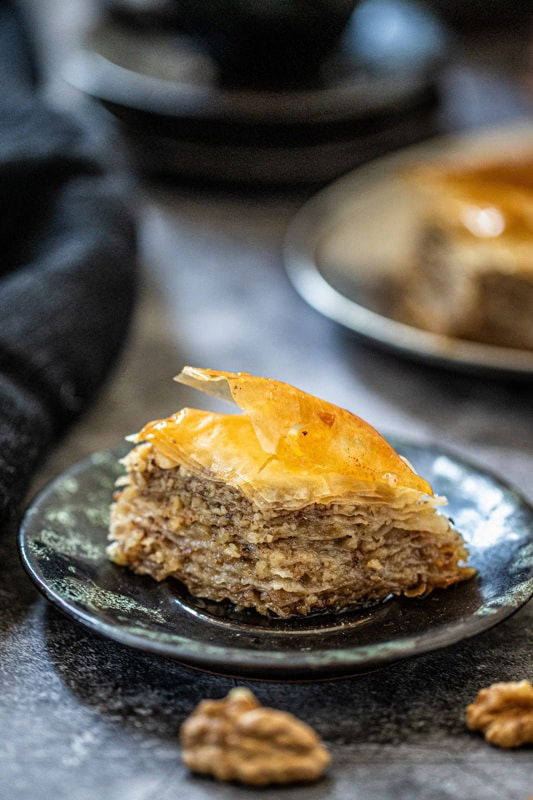
Baklava is often prepared with walnuts, but you can find versions with almonds and pistachios. In Armenia, cinnamon and cloves are added to the filling. In Iran, they prepare a slightly drier version but watering it with rose water. In many parts of Turkey and Greece, baklava is served with ice cream in the summer, most commonly vanilla flavored.
Baklava is made using lots of layers of phyllo pastry, stuffed with walnuts, and then soaked in “agda.”
Agda is essentially a sirup made out of water and sugar with a few slices of lemon. Now is the time to move to the recipe and teach you how to make this delicious dessert.
Step-By-Step Photos Of How To Make Baklava

Baklava Recipe (Baklava s Orasima)
Rich in flavor, juicy and sweet, a real calorie bomb that is hard to resist. Here is how to make baklava with walnuts.
Ingredients
For The Main Part
- 500 g phyllo pastry sheets (1lb)
- 800 g walnuts, whole (6 cups)
- 300 g butter (1 1/3 cups) or you can use or vegetable oil
For The Agda
- 800 g white sugar (4 cups)
- 800 ml of water (3 1/3 cups)
- 3-4 lemon slices
Instructions
This is one of the few recipes where we don’t start with making our own pastry, as with these we'll use the store-bought phyllo sheets as it’s used in the Balkans. Instead, we'll first start with making the agda.
- Mix the sugar and water in a pot, a place on high heat uncovered
- Once it's boiling, watch the clock - after boiling for approx 6-8 minutes, you can add one or two lemon rings, remove the pot from the stove, place on the lid, and allow the agda to cool completely
- Take the whole walnuts, and grind them in an electric chopper. I prefer this method, as I can easily control the size of the ground nuts. Baklava tastes better if you have both, finely ground walnuts as well as some bigger pieces in it
- Now, we'll need to clarify the butter. If you're using vegetable oil, you can skip this step. Place the butter in a pot and heat it over medium heat. Once the white foam appears on the surface, remove it with a spoon and discard. Do not stir the butter. After a few minutes, the butter will become clear, a white sediment will form at the bottom of the pot. Remove the pot from the stove and pour the yellow, clear portion into another pan and throw away the white precipitate (milky substance) at the base. It's important to clarify the butter to avoid black spots appearing on the baklava while it bakes
- Cut the phyllo sheets to the size of your baking tray. I cut my sheets in half, as I used the smaller tray and therefore had 20 phyllo sheets for layering. If your tray is for 2/3 the size of sheets then you can also use two smaller pieces to make one layer (it doesn’t matter if they overlay)
- Grease the tray with a little butter and put the 1st sheet inside, using a pastry brush, coat the pastry sheet. Repeat this step for the 2nd, 3rd, and 4th sheets remembering to brush each sheet
- Spread some of the walnuts on top of the 4th sheet
- Add 2 more layers of brushed phyllo sheets, and spread more walnuts over them
- Continue until you're left with 4 sheets of pastry. Grease the 3 last layers - but not the last sheet
- It is important not to grease the last phyllo sheet as this last sheet, will need to be pre-sliced before baking. If you were to grease the last sheet, it would be very difficult to make straight cuts
- Place the last sheet on, and then using a very sharp knife, cut the baklava into strips of the same size. If you are making squares, rotate the tray 90 degrees. If you would rather make rhombuses, rotate it 45 degrees. I made the slices to the pastry by being very careful. You could also use a piece of paper or cardboard to make it easier and precise. Refer to the photos to make it easy to understand
- Grease the top phyllo sheet and place the baklava in a preheated oven at 180°C (350°F), and bake for approx 30-35 min
- When the baklava has turned a golden yellow hue, remove it from the oven and pour over the cold agda
- Cover it with a wet kitchen cloth. I suggest you place 2 wooden sticks or wooden spoons across the tray, before placing over the wet cloth to prevent it from sticking to the top layer
- Allow the baklava to soak up the agda and cool overnight
- Once cooled, if the top layer has curled, you can remove the first layer and discard
- Serve with a strong cup of coffee!

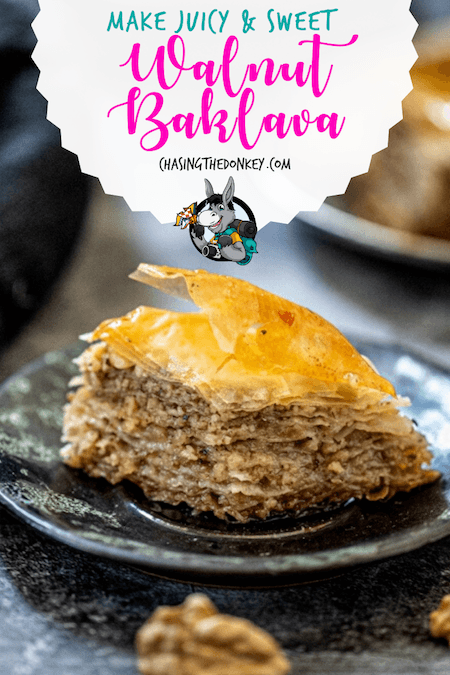
- Meat And Cheese Burek
- Stuffed Peppers {Punjene Paprike}
- Klipići {Rolls}
- Under The Bell {Ispod čripnje}
- Pasticada Recipe
- Octopus Salad
- Prezgana Soup (Brown Roux Soup)
- Lazy Apple Pie {Lijena Pita s Jabukama}
- Stuffed Vine Leaves (Japrak)
- Zagorje Cheese Strukli
- Trogirski Rafioli {Filled Cookies}
- Bijela Pita (White Slice Traditional Cake)
- Buredžici: Meat Pie Topped With Sour Cream, Yogurt & Garlic
- Oblatne s Čokoladnom Karamel Kremom (Tort Wafers Cake)
- Gulaš (Traditional Goulash)
- Croatian Rudarska Greblica
- Kuglof With Apples Recipe (Apple Bundt Cake)
- Hrapoćuša – Traditional Cake From Brač Island


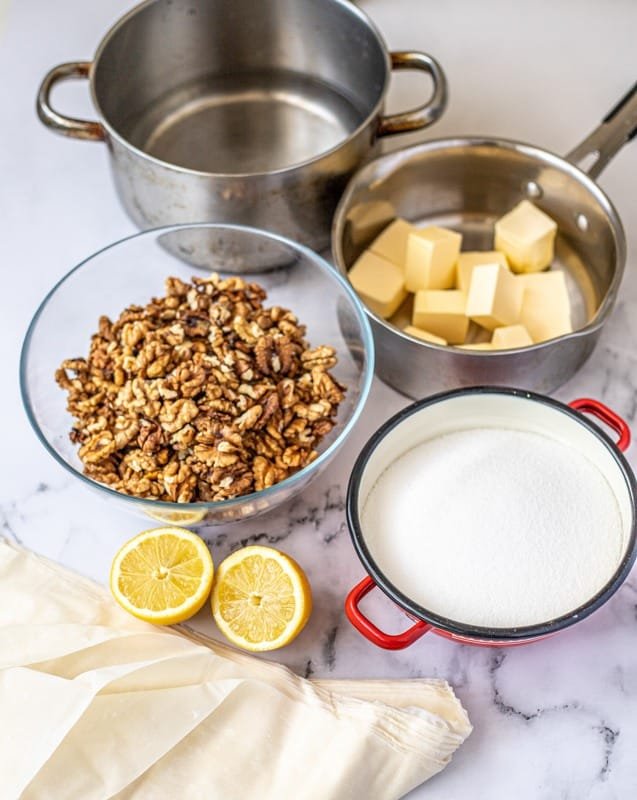
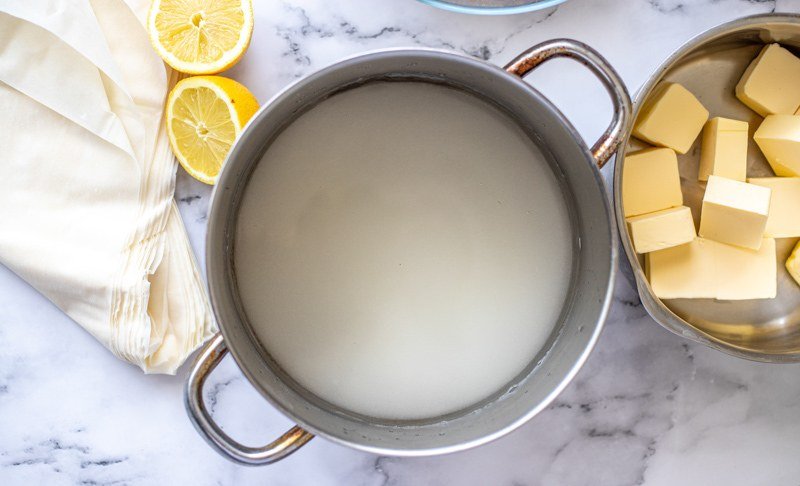
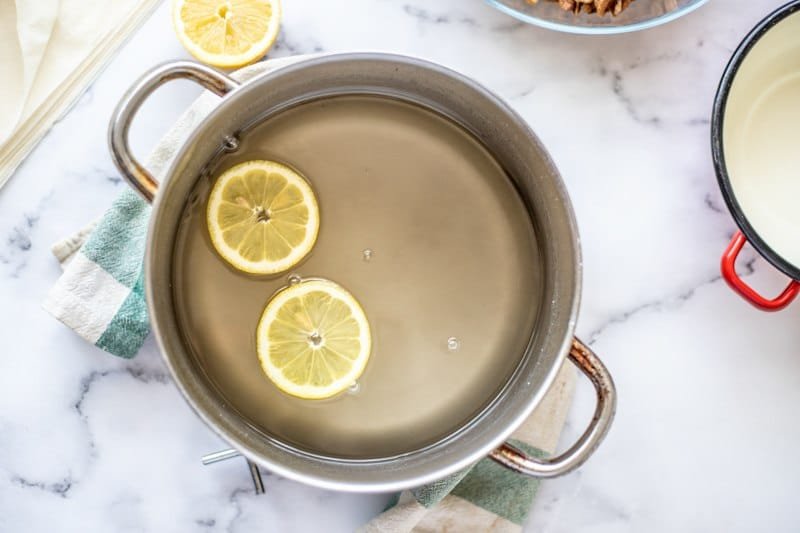
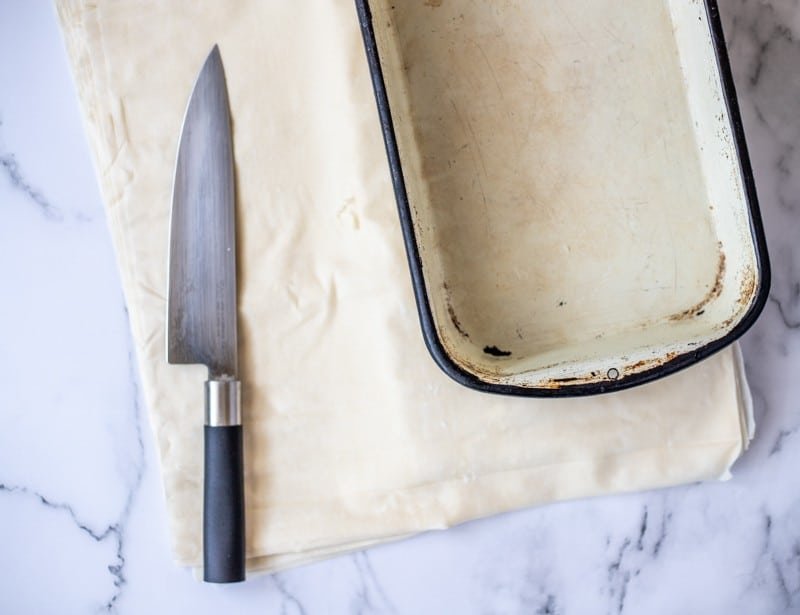
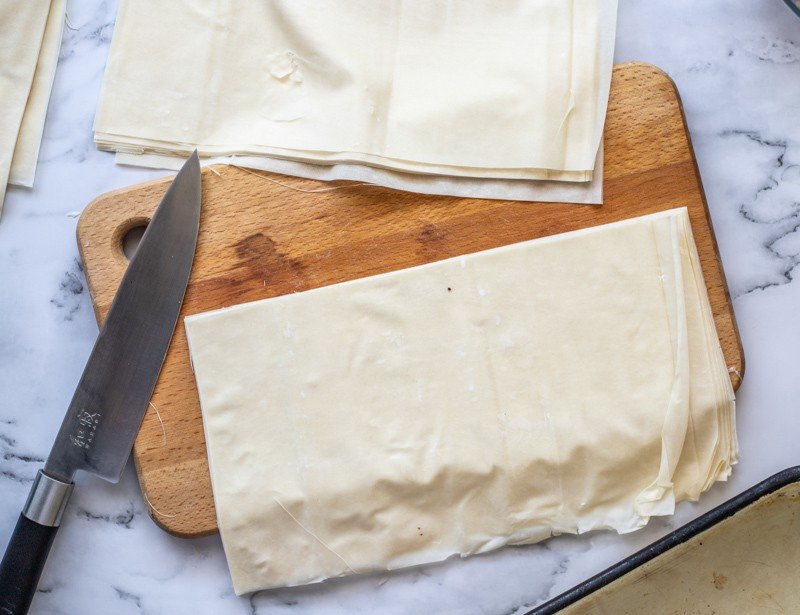
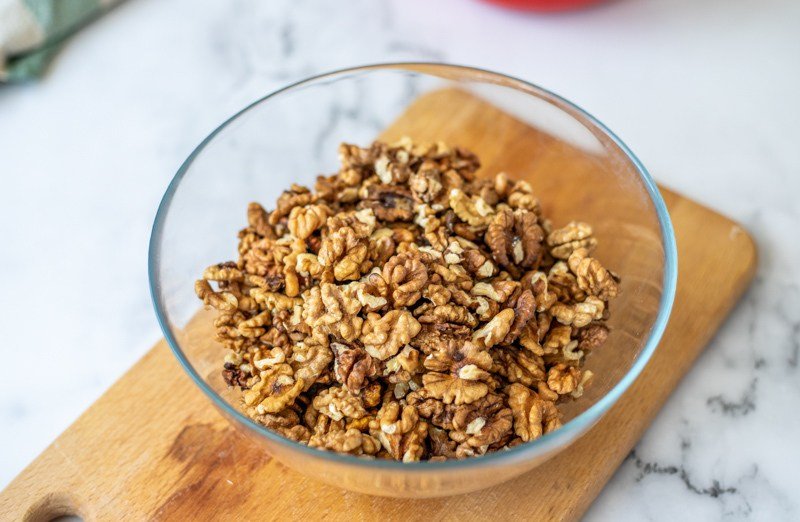
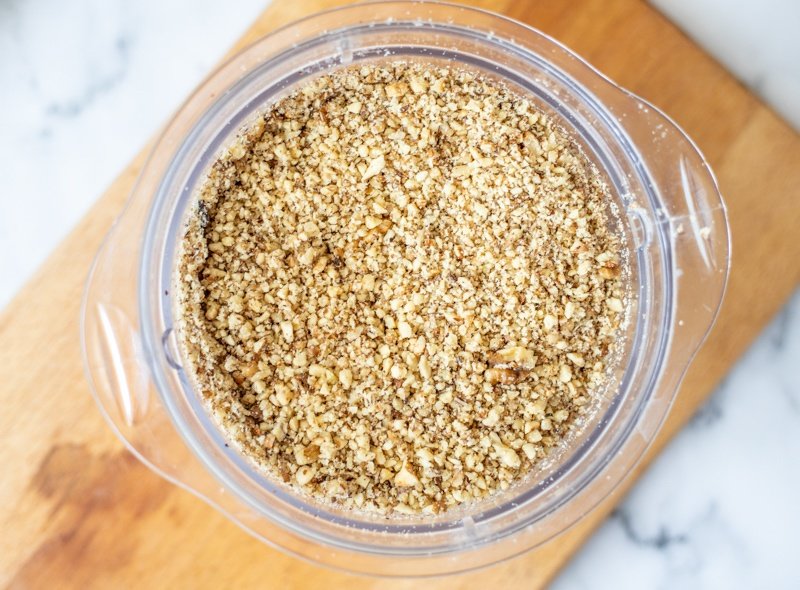

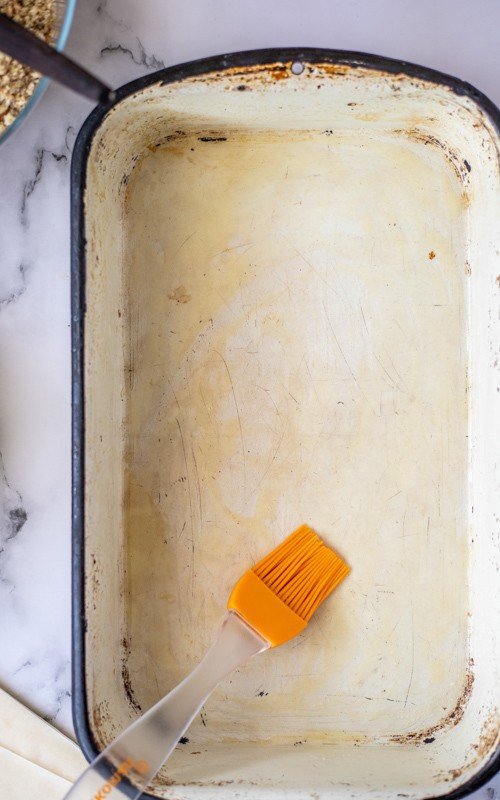

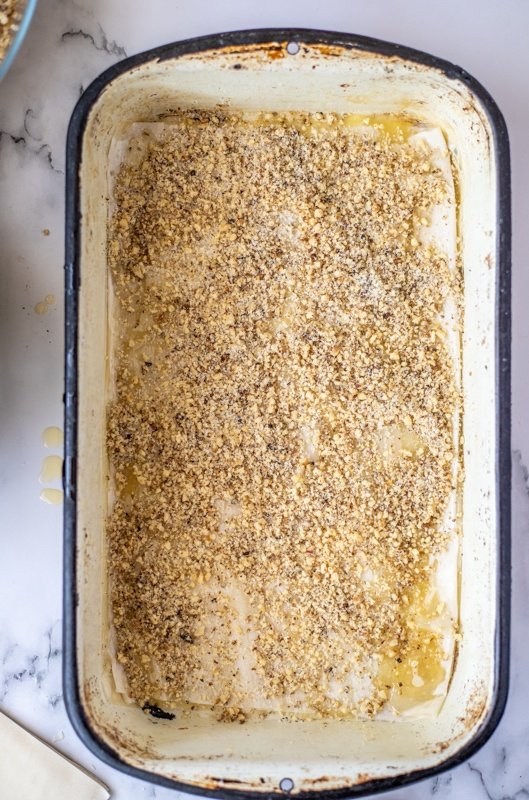
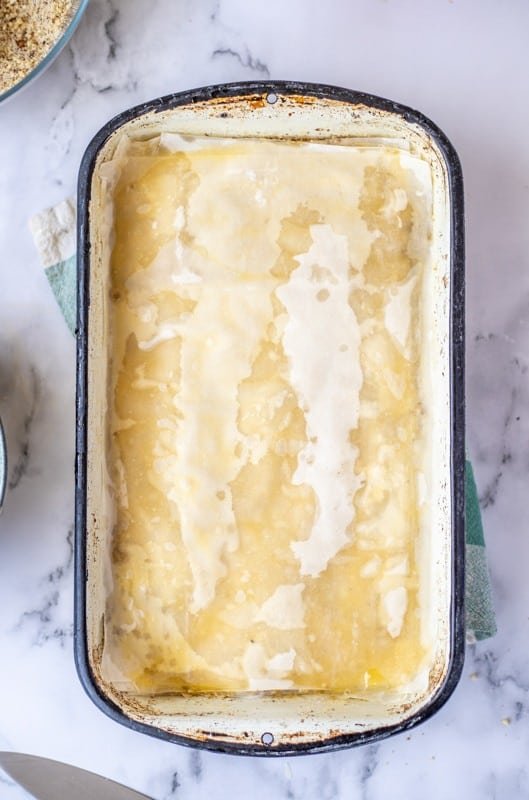
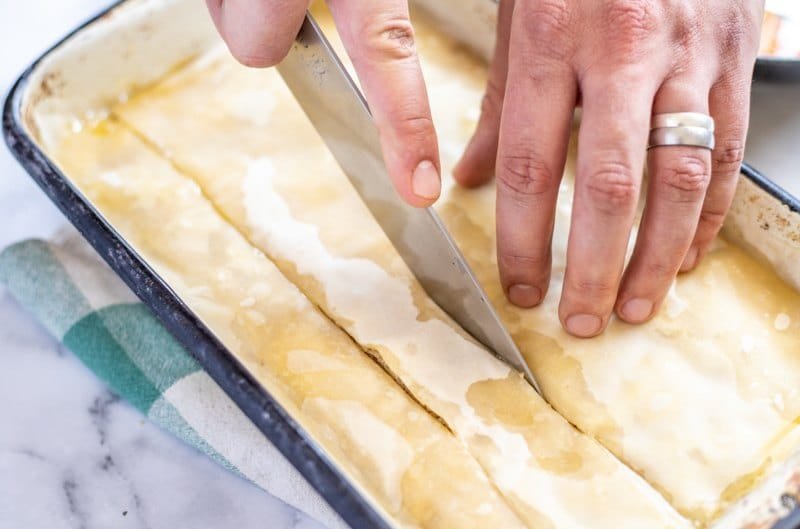
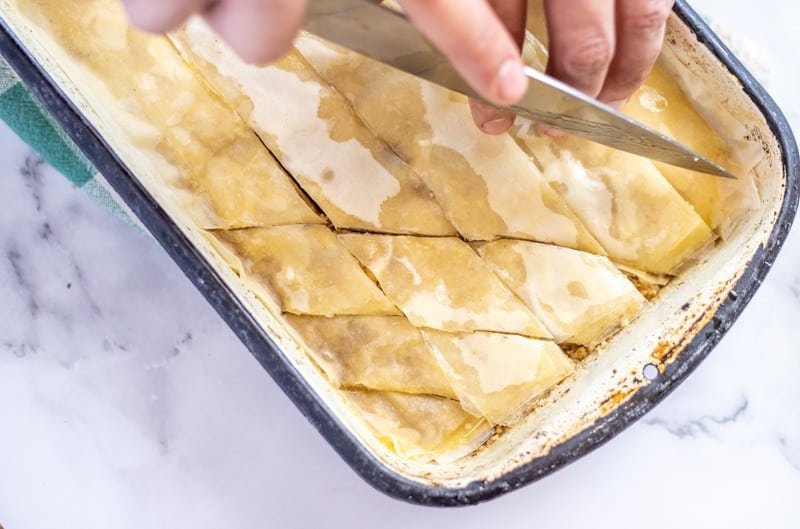
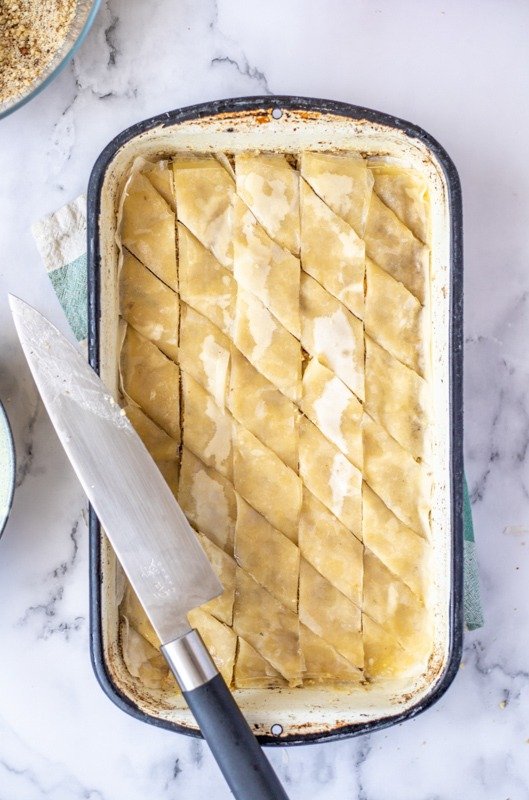
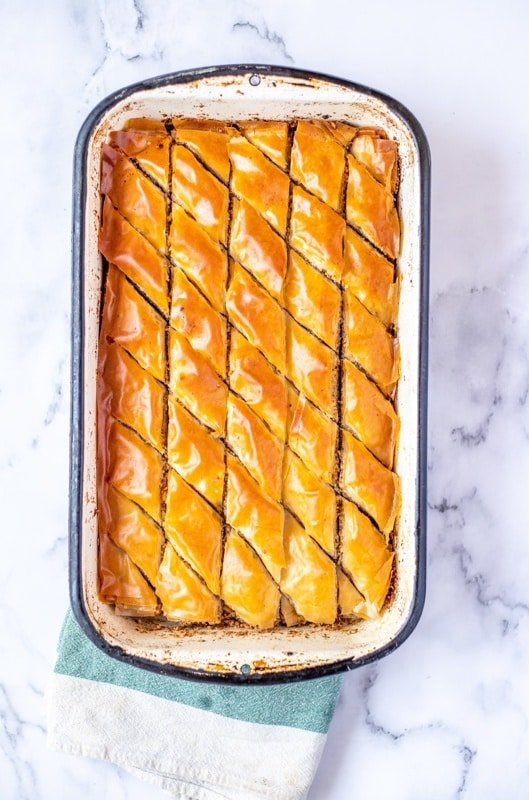
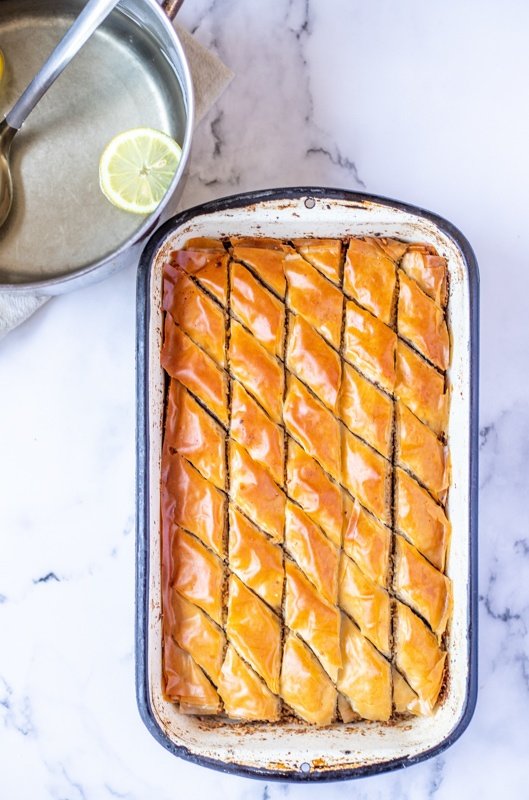


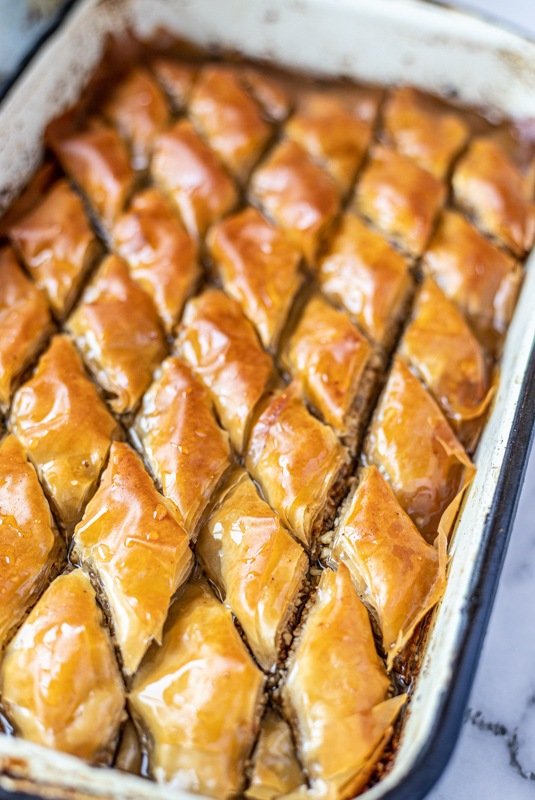
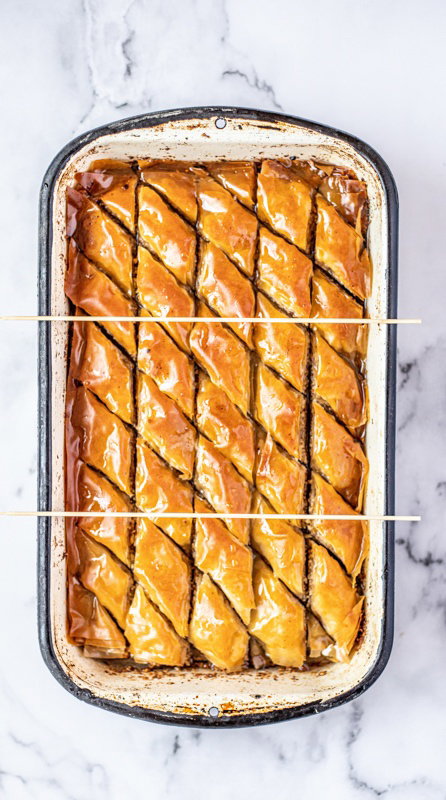
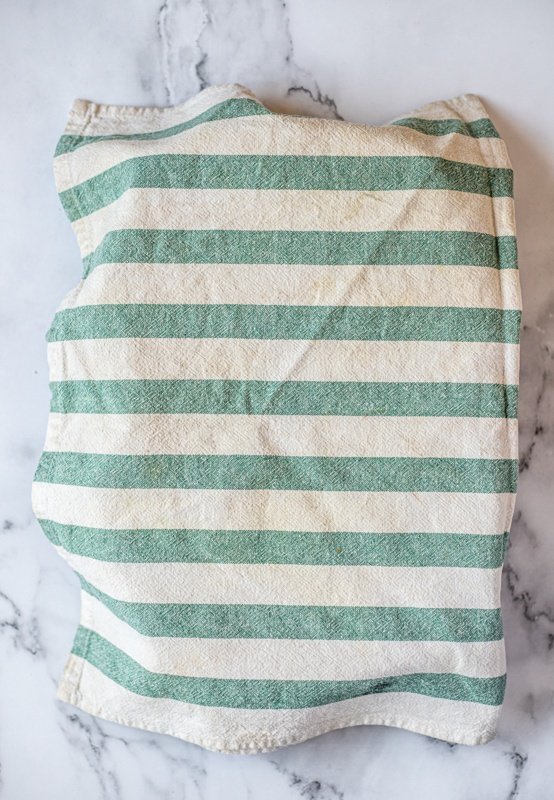
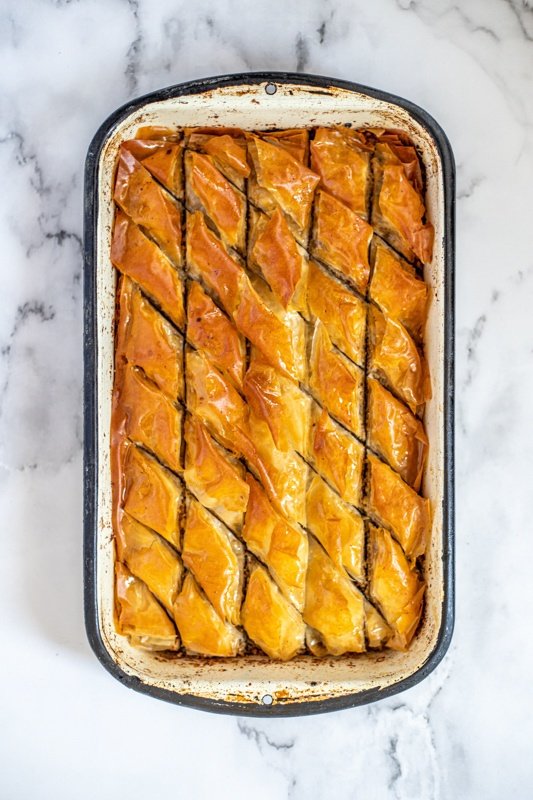
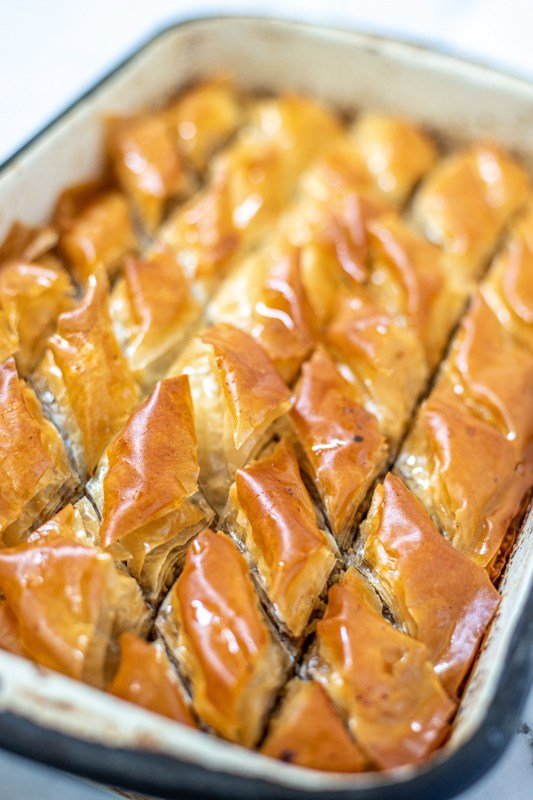
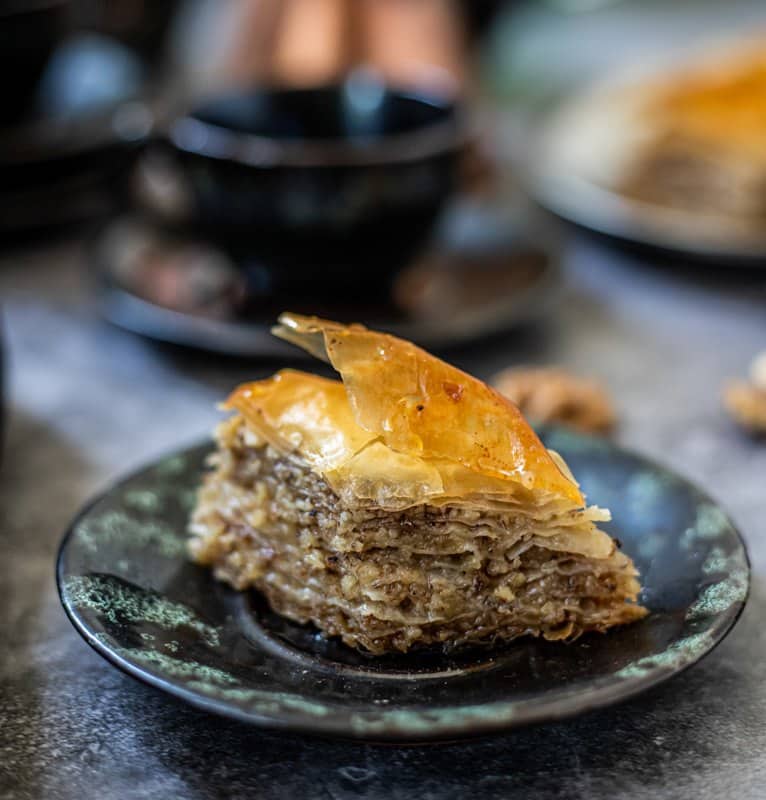
Baklava recipe is generally baked with butter but I prefer using ghee for the baking of the sweet. Ghee clarified butter is nutritious and the clarified butter smoke point is higher than butter, which is why I prefer using ghee clarified butter. However, I am happy with the ghee baked Baklava.
I’m making this for some friends from Romania and want it to be perfect. This is a variation of the recipe that was suggested to me. I found I liked your method and ingredients as they best fit their description to me. I’m wondering though, when you rest the baclava overnight, do you rest in the refrigerator or on the counter please and thank you!
I leave mine on the counter, but in summer I would put it in the fridge.